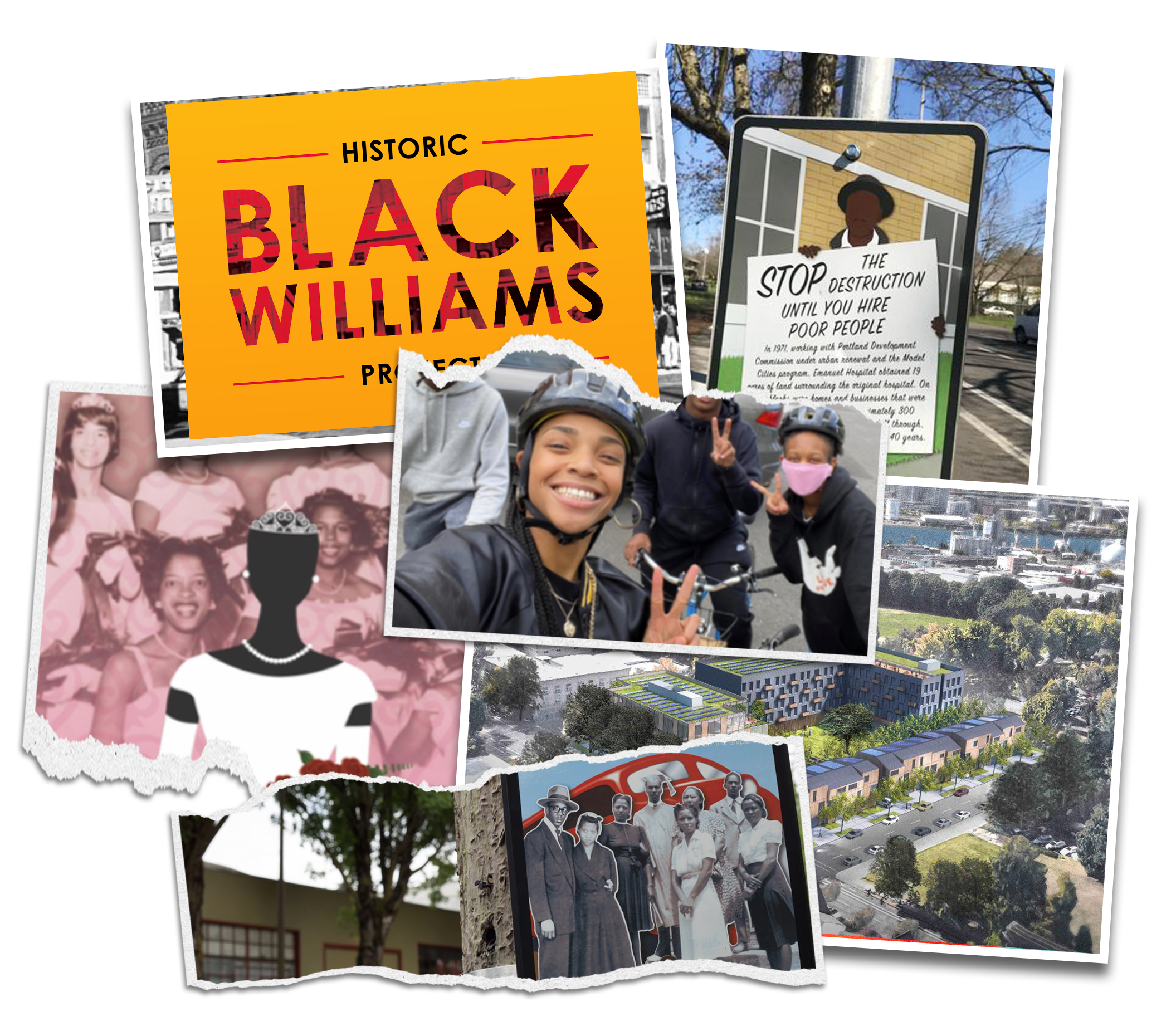
Reclaiming. Restoring. Reuniting.
This land holds memory. At the intersection of North Williams and Russell was once the beating heart of Portland's Black community—a vibrant economic and cultural district pulsing with life, soul, and boundless possibility.

Reclaiming. Restoring. Reuniting.
This land holds memory. At the intersection of North Williams and Russell was once the beating heart of Portland's Black community—a vibrant economic and cultural district pulsing with life, soul, and boundless possibility.

But that heartbeat was silenced. In the name of "urban renewal," hundreds of Black families were forced from their homes and businesses. Their neighborhoods were bulldozed. The land sat vacant for decades—a wound that never healed.
This is where our story begins—not with erasure, but with return. Williams & Russell CDC was born from the determination to do what hadn't been done before: restore this sacred site to the community it was stolen from and build a future rooted in justice, healing, and Black self-determination.
This isn't just development. This is reparative development—for Black Portland, by Black Portland.
-
Pre-1940s — Foundations of a Community
Where It All Began
Long before this was Portland, this was Albina—a thriving city established in 1872 by Edwin Russell and George Williams. As railroads arrived in the 1880s, waves of immigrants built homes and businesses, creating a diverse, working-class community. By the early 1900s, as racist housing policies pushed Black families out of other Portland neighborhoods, Albina became a beacon of possibility—one of the few places where Black Portlanders could legally live, work, and dream.
-
1940s–1950s — The Heart of Black Portland
When Williams Avenue Came Alive
Williams Avenue emerged as the commercial and cultural heartbeat of Portland's Black community. Paul's Cocktails, the Cotton Club, the Williams Avenue YWCA, countless small businesses—this corridor buzzed with Black entrepreneurship, jazz music, and community pride. Despite redlining and discriminatory lending, families invested their life savings in homes and businesses, creating what residents lovingly called "Harlem on the Willamette."
-
1960s — The Planning of Destruction
When "Progress" Meant Removal
City planners began labeling thriving Black neighborhoods as "blighted" and "beyond rehabilitation." Urban renewal became the weapon of choice. Memorial Coliseum displaced hundreds of families. Interstate 5 carved a concrete scar through the community. The message was clear: Black families were expendable in the name of progress. The foundation was being laid for even greater devastation to come.
-
1970s — The Deepest Cut
Bulldozed for Broken Promises
In the early 1970s, the final blow landed. Emanuel Hospital and the Portland Development Commission seized homes and businesses, forcing out 171 families—74% of them Black—for a promised hospital expansion. Mrs. Leo Warren led the Emanuel Displaced Persons Association in resistance, but the bulldozers came anyway. The expansion never happened. 1.7 acres of sacred ground sat empty, a constant reminder of what was stolen.
-
1980s–2000s — The Long Wait
Vacant Land, Unbroken Spirit
Forty years passed. The vacant lot stood as a monument to broken promises while families struggled to rebuild their lives scattered across the city. But the elders never forgot. Community leaders like Rev. John Jackson and the Black United Front kept fighting. Descendants organized. The memory of what was lost—and the dream of what could be restored—lived on in the hearts of those who refused to let injustice have the final word.
-
2017 — A Moment of Reckoning
The Apology That Opened the Door
Mayor Ted Wheeler did what no Portland mayor had done before: he publicly apologized for the city's role in displacement and broken promises. Working with Legacy Health and Prosper Portland, a new process began—one led by community voice. The Williams & Russell Project Working Group formed, bringing together local Black leaders, descendants of displaced families, and community organizations to envision what healing and return could look like.
-
2019–2024 — Community Vision Takes Shape
Building the Blueprint for Return
After years of community meetings, surveys, and visioning sessions, the Williams & Russell CDC was officially established as a Black-led nonprofit. Every aspect of the process reflected community input—from architecture and design to construction partnerships. The vision crystallized: this would be reparative development, where descendants don't just have the right to remain, but the power to return and thrive.
-
2025–Future — Breaking Ground, Breaking Barriers
From Vision to Reality
In February 2025, descendants, elders, and community members gathered for a historic groundbreaking ceremony. The apartments and townhomes—100% reserved for those eligible under Portland's Preference Policy—will open in September 2026. The Black Business Hub launches in early 2028. This isn't just Portland's story anymore. We're creating a national model for what reparative development looks like when communities control their own healing.

Join the Return. Power the Movement.
This sacred ground is coming back to life, but our work is far from finished. Williams & Russell CDC isn't just restoring buildings—we're rebuilding community power and creating a national model for reparative justice.
Every family that comes home, every business that opens, every dollar invested in Black-led development sends a message: We don't just have the right to remain. We have the right to return, to thrive, and to lead.
Be part of this historic movement. Your support fuels the return.


